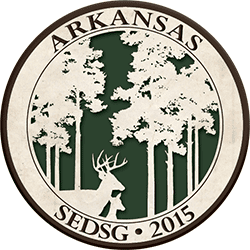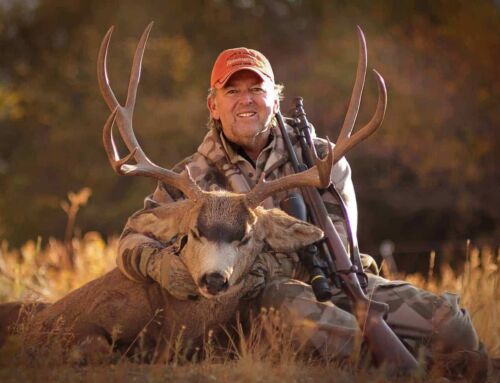 This respected group holds an annual conference at which deer biologists and researchers present their recent findings on whitetail biology and management. The 2015 meetings just wrapped in Arkansas. I followed QDMA Tweets from the conference #SEDSG. Here, some of the most interesting new science (followed by my thoughts):
This respected group holds an annual conference at which deer biologists and researchers present their recent findings on whitetail biology and management. The 2015 meetings just wrapped in Arkansas. I followed QDMA Tweets from the conference #SEDSG. Here, some of the most interesting new science (followed by my thoughts):
–Plants in poor soils contain all the nutrients deer need, just low in quantity, which you can fix. @UTKnoxville’s Craig Harper. (Any dirt can grow big deer; that is where lime and fertilizer come in.)
–Bucks of all ages/sizes successfully breed, one reason hunters can’t change genetics with trigger decisions. Chad Newbolt @AuburnU (Never was a fan of culling bucks anyhow.)
Study of buck breeding success at @AuburnU found 13 of 27 sets of twins and 1 of 2 triplet sets involved multiple fawn daddies. (More fascinating new science shows that nearly 50% of fawns have two or more buck fathers, so factor that into genetics.)
Kip Adams of QDMA: One reason for Midwest buck harvest declines: Loss of habitat. 5 million acres in Midwest taken out of #CRP from 2007 to 2014. (Other reasons include tough, long winters in upper Midwest, coyote predation and EHD outbreaks in some areas.)
3 does in @UGAWarnell study of deer/car collisions actually used interstate right-of-way for fawning, presumably to avoid predators. (Yet another example of how adaptable whitetails are. But I fear what happened to those little deer as they tried to leave their birth area. I was a driving on busy 4-lane in VA two springs ago and saw a tiny fawn that had just been hit by a car. One of most heartbreaking things I’ve ever seen.)
Moderate soybean browsing by deer may actually increase bean yield by spurring stem growth: @MSUDeerLab (So unless deer are smashing and destroying a farmer’s field, no need for depredation permits.)
Don’t waste time/money fertilizing white oaks, but timber thinning around good acorn producers works. Jordan Nanney @UTKnoxville (Tree fertilizers don’t sweeten the acorns to deer, as once believed.)
14 GPS-collared adult bucks in LA had widely variable home ranges. 245 to 2,852 acres in fall! No real “average” buck (range). @UGAWarnell (What I’ve been finding in my field research—most mature bucks have relatively small home ranges/core areas, but some live and travel in large areas, you just never know.)
Doe health affects (the) fawn for life. Full effect of nutritional improvement on deer size takes 2 generations. Eric Michel @MSUDeerLab (Interesting that deer science/physiology has come this far and is so in depth!)
If coyotes hitting fawns hard (in you area) you may have to back off doe kill AND trap in spring to prevent (deer) population decline. Colter Chitwood @NCState (Most average hunters cannot or will not trap, but we should all shoot some coyotes and show restraint on our doe kill.)






That was some darn cool stuff. Thanks for sharing!